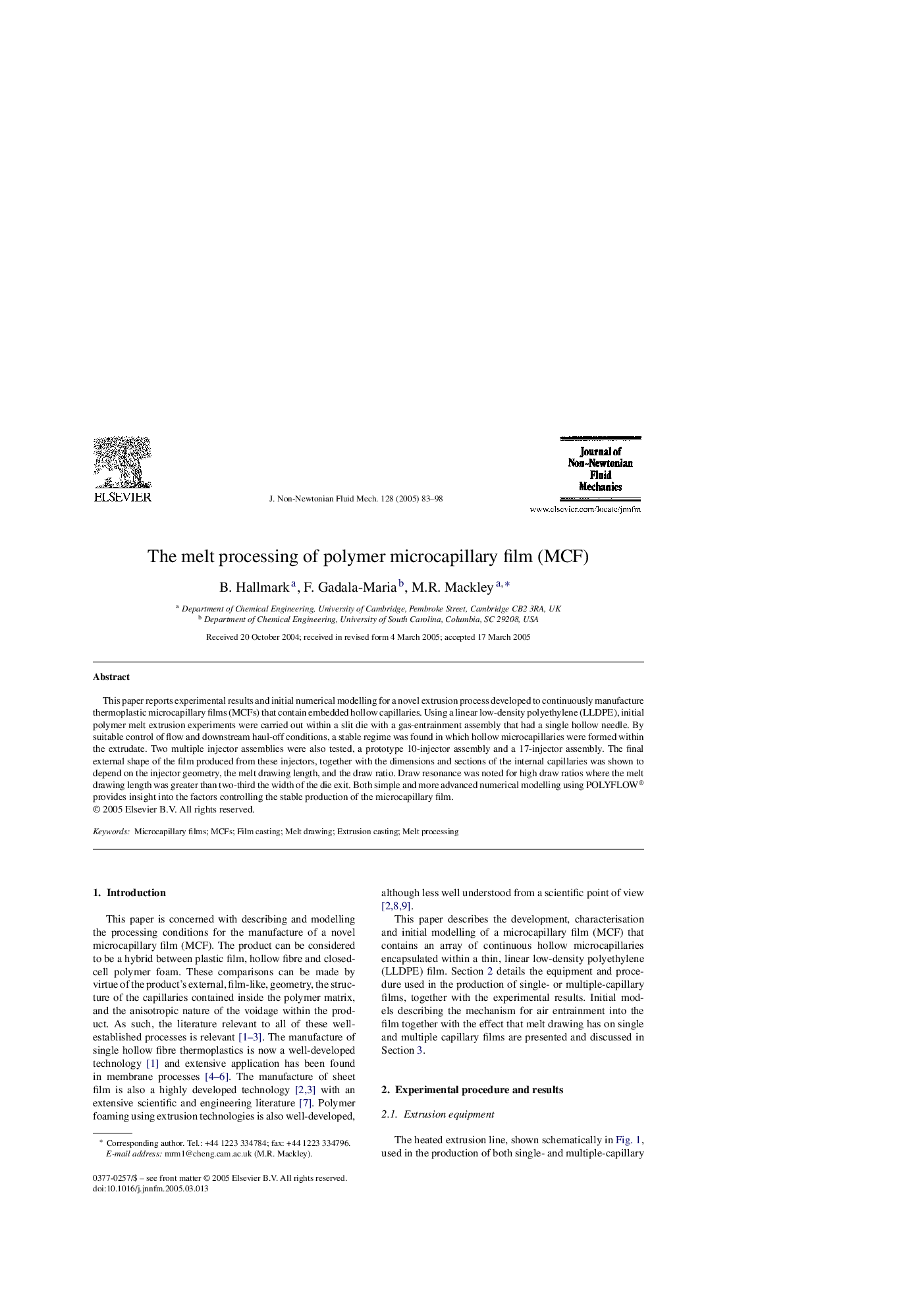| Article ID | Journal | Published Year | Pages | File Type |
|---|---|---|---|---|
| 9693409 | Journal of Non-Newtonian Fluid Mechanics | 2005 | 16 Pages |
Abstract
This paper reports experimental results and initial numerical modelling for a novel extrusion process developed to continuously manufacture thermoplastic microcapillary films (MCFs) that contain embedded hollow capillaries. Using a linear low-density polyethylene (LLDPE), initial polymer melt extrusion experiments were carried out within a slit die with a gas-entrainment assembly that had a single hollow needle. By suitable control of flow and downstream haul-off conditions, a stable regime was found in which hollow microcapillaries were formed within the extrudate. Two multiple injector assemblies were also tested, a prototype 10-injector assembly and a 17-injector assembly. The final external shape of the film produced from these injectors, together with the dimensions and sections of the internal capillaries was shown to depend on the injector geometry, the melt drawing length, and the draw ratio. Draw resonance was noted for high draw ratios where the melt drawing length was greater than two-third the width of the die exit. Both simple and more advanced numerical modelling using POLYFLOW® provides insight into the factors controlling the stable production of the microcapillary film.
Keywords
Related Topics
Physical Sciences and Engineering
Chemical Engineering
Fluid Flow and Transfer Processes
Authors
B. Hallmark, F. Gadala-Maria, M.R. Mackley,
